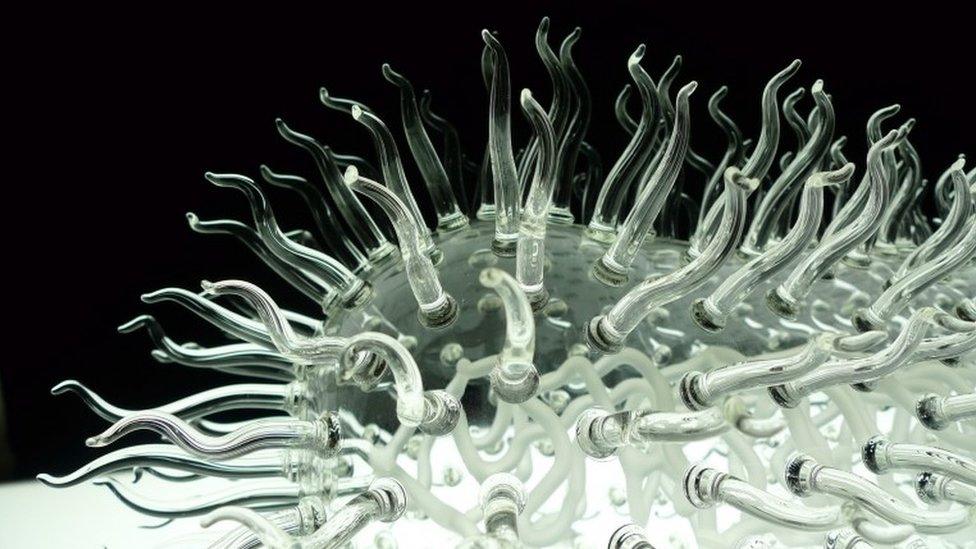Oxford Natural History exhibition explores benefits of bacteria
- Published

The exhibition includes this glass E.coli sculpture by Luke Jerram
A new exhibition is aiming to show the positive impact of bacteria.
Bacteria World at the Oxford University Museum of Natural History has 55 exhibits, including a 92ft (28m) long inflatable E.coli sculpture.
Director Paul Smith promised the exhibition would explore "our very intimate relationships with bacteria".
Specimens include leafcutter ants, leeches and vampire bats, which live symbiotically with bacteria.
Bacteria World includes a 92ft (28m) long, inflatable E.coli sculpture
Prof Judith Armitage, president-elect of the UK Microbiology Society and lead scientist for the exhibition, said: "I hope this exhibition goes some way to revealing the generally unknown and unseen vast, diverse world of bacteria.
"Bacteria have been evolving since the beginning of life on Earth and helped form the planet on which we live, providing the oxygen and much of the nitrogen needed for current life.
Bacteria in probiotics are known to have health benefits
"Their complex communities, where they live and die, compete, communicate, co-operate, fight and have sex, have evolved for specific environments and, we are coming to realise, are essential for healthy soils, oceans and even ourselves.
"While some, in the wrong place, can cause diseases, we need to understand microbial communities to be able to continue to control those diseases and to maintain both a healthy body and a healthy planet."
This dyed Paenibacilluscolony shows how bacterial colonies can grow
On display will be geological fossils showing evidence of how bacteria oxygenated the Earth 2.4 billion years ago.
It includes items loaned by the Wellcome Collection, Yale Peabody Museum of Natural History, the Pitt Rivers Museum, and the Natural History Museum, London.
The Common Grass Yellow butterfly hosts Wolbachia bacteria which skew the population in favour of female butterflies
The exhibition opens in October.